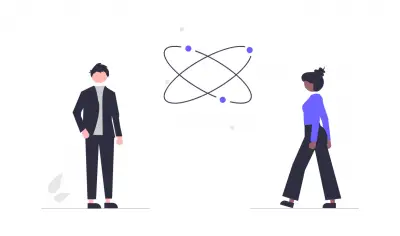
Physics Questions and Answers
If you want to learn more about the nature and properties of matter and energy or you're simply preparing for a Physics exam, these Physics past questions and answers are ideal for you.

If you want to learn more about the nature and properties of matter and energy or you're simply preparing for a Physics exam, these Physics past questions and answers are ideal for you.
always settles in the magnetic N-S direction.
is repelled by a magnet.
always settles in the magnetic E-W direction
is attracted by a magnet.
Correct answer is A
The conclusive test for magnetism in a steel bar suspended horizontally at its midpoint is when the bar always settles in the magnetic N-S (North-South) direction.
Which of the following devices is associated with alternating currents only?
Step-up transformer
Induction coil
Moving coil galvanometer
Lead-acid accumulator
Correct answer is A
The device associated with alternating currents (AC) only from the provided options is the step-up transformer. Step-up transformers are specifically designed to work with alternating currents and are used to increase voltage levels in AC systems.
N = \(\frac{360}{\theta}\)
\(\frac{1}{f} = \frac{1}{u} + \frac{1}{v}\)
m = \(\frac{v}{u}\)
f = \(\frac{1}{D}\)
Correct answer is D
The equation f = \(\frac{1}{D}\) is not a correct mirror formula
Which part of the human eye performs the same function as the diaphragm in a lens camera?
Choroid
Retina
Iris
Cornea
Correct answer is C
The part of the human eye that performs a function similar to the diaphragm in a camera lens is the Iris.
Just like the diaphragm in a camera lens controls the amount of light entering the camera, the iris in the eye controls the amount of light that enters the eye by adjusting the size of the pupil. It can contract or expand to regulate the size of the pupil in response to varying light conditions, thus controlling the amount of light that reaches the retina at the back of the eye.
The purpose of commutators in a direct current motor is to
reverse the direction of the current after every half rotation
increase the number of rotations per second
enable a uniform couple to act on the coil.
increase the efficiency of the motor.
Correct answer is A
The purpose of commutators in a direct current (DC) motor is to reverse the direction of the current after every half rotation.